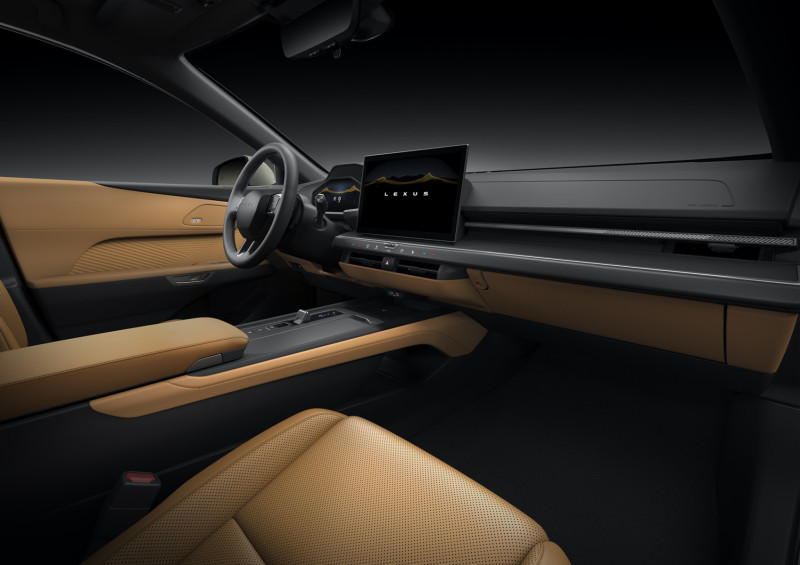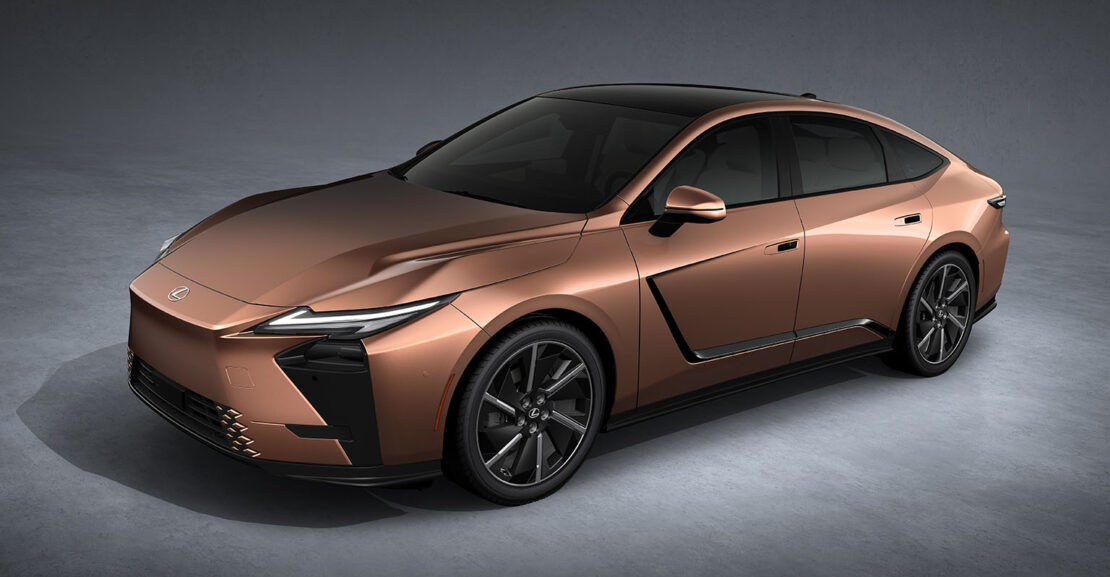Lexus has completely reworked its bread-and-butter sedan, which will come as a hybrid and a fully electric model when it reaches the U.S. in 2026.
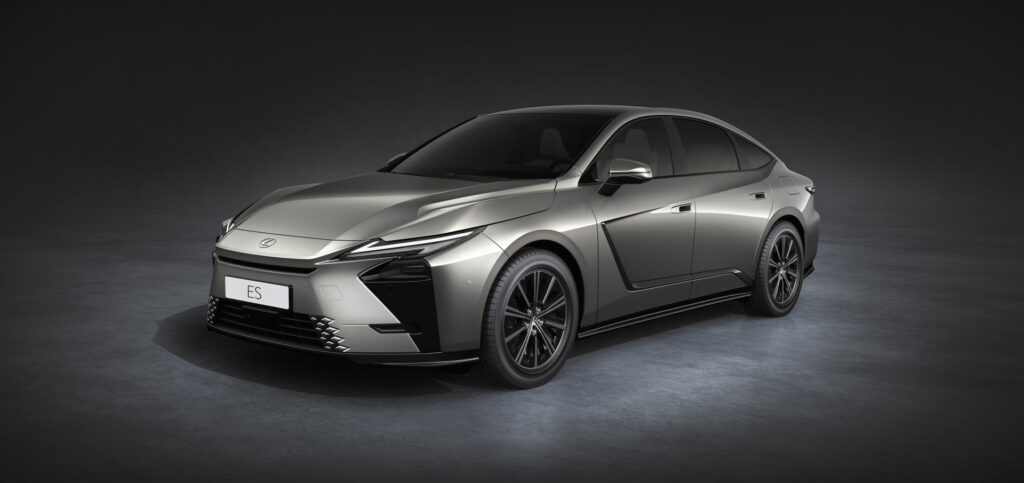
When Toyota overhauled the popular Camry sedan for the 2025 model year—introducing sharper styling and, more importantly, a standard hybrid powertrain—we knew it wouldn’t be long before its platform-mate, the Lexus ES, entered a new generation too. The 2026 Lexus ES, unveiled at the Shanghai auto show, breaks even further from the past than the Camry, with an angular design and the choice of either a hybrid or a fully electric powertrain.
Hybrid or Electric, Take Your Pick
The ES continues to ride on the TNGA GA-K platform, like the Camry, but unlike the Toyota, the ES will offer hybrid and electric powertrains. The hybrid model is dubbed the ES350h and will be offered in front- and all-wheel-drive configurations. Like the outgoing ES300h, the gas engine is a 2.5-liter inline-four. It’s paired with an eAxle, which combines the power control unit and the transaxle for a more compact and lighter design. The system produces 244 horsepower, up from the ES300h’s 215 ponies, which is routed through a continuously variable transmission. The hybrid sedan will accelerate from zero to 62 mph in a claimed 7.8 seconds with all-wheel drive, or 8.0 seconds with front-wheel drive.
Two electric models will be available, the front-wheel-drive ES350e and the all-wheel-drive ES500e. The ES350e makes 221 hp and scoots the sedan to 62 mph in a claimed 8.9 seconds, while the ES500e spits out 338 hp for a claimed zero-to-62-mph sprint of 5.9 seconds. The dual-motor ES500e’s all-wheel drive system can split torque between the front and rear axles as needed. Although Lexus didn’t provide a capacity for the battery, it claims the ES350e will be able to travel 300 miles on a charge when fitted with 19-inch wheels.
While the ES continues to use a MacPherson strut front suspension, the Lexus sedan gains a multi-link rear suspension for the first time, promising better handling.
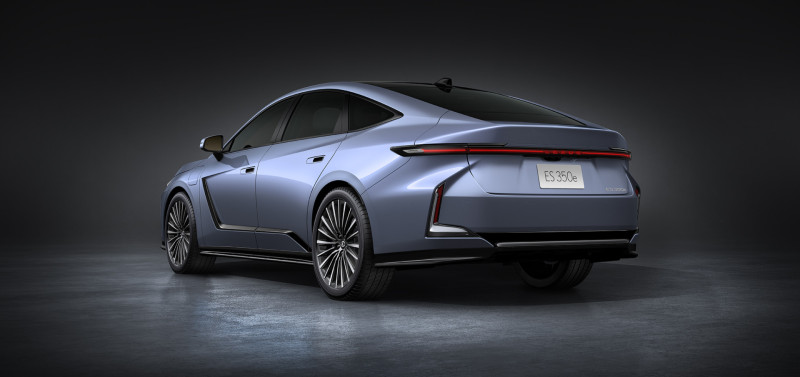
Looking Like A Lowered RZ
The 2026 ES trades the smooth surfacing of the outgoing ES for more hard edges and straight lines. Inspiration came from the 2023 LF-ZC concept, but the design is also clearly descended from Lexus’s first EV, the RZ SUV. Similar to the RZ, the “spindle” grille that has been a mainstay on Lexus schnozes is only vaguely present, with the hourglass shape created by creases in the bodywork instead of trim. On the electric models, there is a blank panel where a grille would normally be, with a vent in the lower bumper to direct cool air to the battery. Hybrid models gain a narrow upper grille to cool the engine.
The ES adopts a trendy split headlight design, with the main headlights mounted in a triangular black panel in the bumper. The daytime running lights live above, sporty a checkmark shape and mirrored below by the turn signals, which form a checkmark facing the opposite direction.
Lexus says the ES measures about 6.5 inches longer than before, with a 3-inch longer wheelbase. The ES also looks a bit taller, likely a result of needing to slot a battery under the floor for the electric models. The roofline has a gradual slope, creating a fastback profile. A black trim piece on the front doors creates a dramatic slash that then runs above the door sill before diving down again ahead of the rear wheels, a distinctive but busy flourish. Around back, a simple full-width LED taillight incorporates illuminated “Lexus” lettering.

Big Screens and Faux Bamboo
The interior sports a clean and minimalist look, and Lexus claims it’s more spacious than before thanks to the longer wheelbase. Lexus also says it made the seating position higher to ease ingress and egress, but we imagine this was also partially dictated by battery placement. The most distinctive element of the ES’s cabin is the door trim, which “recreates the depth and flow of natural bamboo” using 3D printing with integrated ambient lighting. The ES also features a Mark Levinson surround sound system.
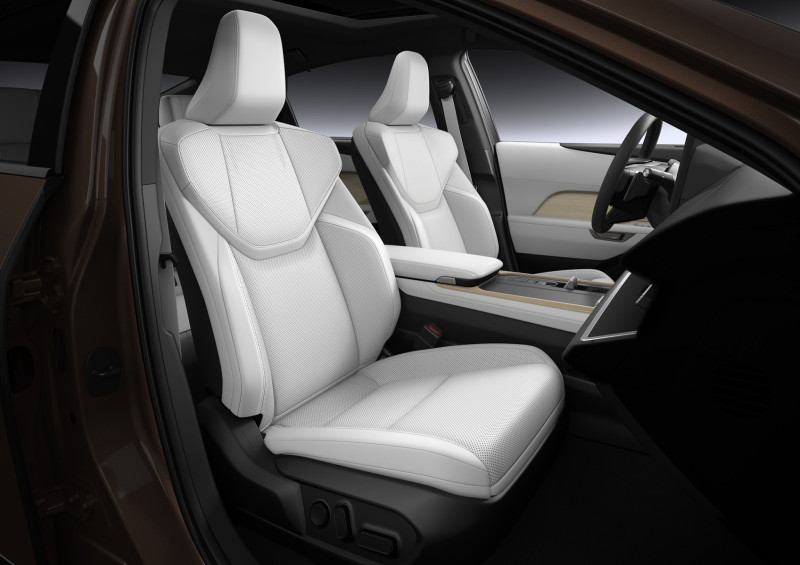
Behind the steering wheel sits a 12.3-inch digital instrument cluster, while a 14.0-inch touchscreen runs the latest version of Lexus’s infotainment system and comes standard with wireless Apple CarPlay and Android Auto functionality. Lexus says the built-in voice assistant is more responsive than before, while the gauge cluster can now display the native navigation system so you don’t have to look over at the main screen for directions.
Lexus will also offer an Executive package on the ES for the first time in North America, which upgrades the rear seats with a passenger-side ottoman, a massage function for the rear outboard seats, and heating and ventilation across the rear seats. The package is only available on the ES350e in the Luxury trim.
The 2026 ES will also be the first Lexus to gain the Lexus Safety System+ 4.0, which gets all of the latest active safety and driver-assistance goodies. More details on this system are coming later, Lexus says, as are more specifics on the 2026 ES for the U.S. market. The 2026 ES will go on sale in the United States at some point next year, but we’ll have to wait a bit longer to find out more.
